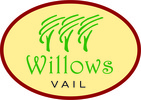The Willows Quartershare owners are not only part of a unique approach to ownership use, but also part of a unique fiscal approach when dealing with expenses and revenues. The owners are not subject to monthly or quarterly dues as is usual with condominium ownership. That does not mean that expenses are not being incurred, but they are paid out of the operating account for the business. Owners have a "drawing account" through which all expenses and revenues pass. On the expense side of things this is pretty straightforward: owners share in all Quartershare expenses equally. These include all the costs to run the nine units, including a 50% contribution to the budget of the Willows HOA (the building.) Additionally owners pay Willows Management (the employer of all the staff) for the cost of the staff used to service Willows Quartershare operations. On the revenue side owners receive a credit of all revenue for every night they are not in residence at the property. If one owner is in house, the remaining 27 owners share all rental revenue for that night equally and the credit is applied to their drawing accounts. There are additional fees that are used to help balance equitable use amongst the owners.
These drawing accounts are tracked on a monthly basis. At the end of the ski season (actually March 31) we take a look at everyone's balance. If you have less than $10,000 you have to provide the funds to bring the account up to that level. If you have more than $10,000 you receive a distribution that brings the account back down to that level. So, $10,000 is the amount of operating capital that each owner is required to have in that account as of March 31. If a unit sells at that time the selling owner is paid out their account balance and the new owners are required to pay in $10,000 to achieve parity. If a unit sells at another point in time the new owners pay in the average of the other owners operating capital number and the selling owner collects the amount that is in their drawing account at the month-end prior to the sale.
The goals of the Willows Quartershare ownership include allowing for equitable use of the property amongst the 28 owners with as few restrictions as possible on owner stays. They also seek to generate revenue to off-set expenses. These two objectives might seem somewhat contradictory but through careful incentives and fees, the system has operated extremely well since the new building's inception in 2008.
The ownership group do not have a goal to maximize profits over owner use. There is significant demand from owners during peak seasons that serve to restrict the possible rental revenues. Generally speaking, over the last several years, owners who use their units sparingly or not at all will receive a distribution. Owners who are heavy users will typically have to pay to bring their accounts back up to the $10,000 threshold. We cannot predict what these numbers will be as they are subject to the annual expenses and particularly the level of owner use, and the times of the year that owners choose to use their units.
These drawing accounts are tracked on a monthly basis. At the end of the ski season (actually March 31) we take a look at everyone's balance. If you have less than $10,000 you have to provide the funds to bring the account up to that level. If you have more than $10,000 you receive a distribution that brings the account back down to that level. So, $10,000 is the amount of operating capital that each owner is required to have in that account as of March 31. If a unit sells at that time the selling owner is paid out their account balance and the new owners are required to pay in $10,000 to achieve parity. If a unit sells at another point in time the new owners pay in the average of the other owners operating capital number and the selling owner collects the amount that is in their drawing account at the month-end prior to the sale.
The goals of the Willows Quartershare ownership include allowing for equitable use of the property amongst the 28 owners with as few restrictions as possible on owner stays. They also seek to generate revenue to off-set expenses. These two objectives might seem somewhat contradictory but through careful incentives and fees, the system has operated extremely well since the new building's inception in 2008.
The ownership group do not have a goal to maximize profits over owner use. There is significant demand from owners during peak seasons that serve to restrict the possible rental revenues. Generally speaking, over the last several years, owners who use their units sparingly or not at all will receive a distribution. Owners who are heavy users will typically have to pay to bring their accounts back up to the $10,000 threshold. We cannot predict what these numbers will be as they are subject to the annual expenses and particularly the level of owner use, and the times of the year that owners choose to use their units.

 RSS Feed
RSS Feed